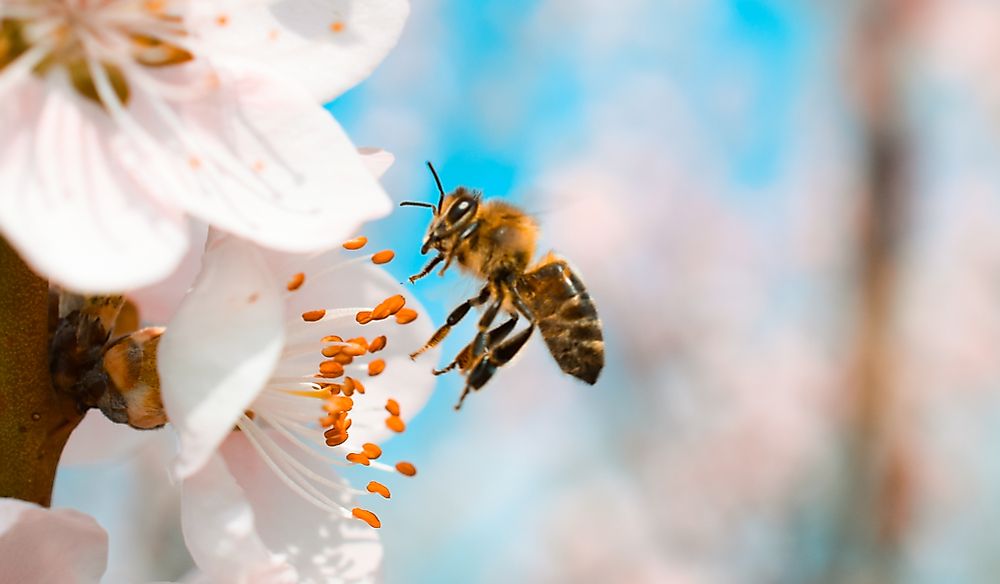How Long Do Bees Live?

Bees are flying insects from the superfamily Apoidea. There are more than 16,000 different species of bees, although the western honey bee is among the most well known, especially for producing beeswax and honey. Bees are social insects that live in colonies, which contain an average of 60,000 bees. Bees are eusocial, meaning each colony has three groups or castes of bees: a fertile queen, male drones, and sterile female workers. The majority of bees in a hive are female workers, while there are between 200 and 300 male drones that are responsible for mating with the queen. The lifespan of a bee varies depending on its caste. Drones have the shortest lifespan because they die soon after mating. Workers typically live for between 45 and 60 days, but factors such as diet, weather conditions, individual health, role, and enemies affect their lifespan.
The Life Cycle of Bees
Like most insects, bees undergo a complete metamorphosis. Bees begin as eggs, before transforming into larva, pupa, and finally into adults. The queen bee forms a colony during the winter and starts laying eggs in the honeycomb. Additionally, she determines which bees will become drones or workers by choosing which eggs to fertilize. Fertilized eggs develop to become female workers, while unfertilized eggs develop into drones.
Larva
Eggs develop into larvae after three days. The larvae primarily eat and are fed by nurse bees, which are a type of worker bee. During this period, the larvae grow rapidly and do not leave the cell. For the first three days, hatchlings feed on royal jelly, but after the fourth day, only potential queens are fed royal jelly, while the remainder feed on pollen and honey. The larval stage lasts for a period of six days.
Pupa
After six days, the larva becomes dormant and begins transforming into a pupa. It begins to look like a bee, as it develops legs, wings, and eyes. Additionally, hair begins to cover its body. During this stage, temperature affects the growth of the pupae. If the temperature drops, a pupa takes longer to develop. During the last phase, the pupae spin a thin silk cocoon within the cell. The pupal stage lasts for 12 days, but the queen transforms faster than drone and worker bees.
Lifespan of Adult Bees
The lifespan of adult bees varies depending on caste role and niche.
Queen Bee
The queen bee lay eggs and produces the next generation of bees. During her lifespan, a queen can lay thousands of eggs. A queen bee lives for between two and five years, but needs worker bees to provide her with shelter and food.
Worker Bees
Worker bees are the smallest in size and make up the largest proportion of bees in a colony. In fact, there can be between 25,000 and 80,000 worker bees in a colony. Workers live for between six and eight weeks, and their core responsibility is to care for eggs until they hatch, feed the queen, and protect the hive.
Drone Bees
Drone bees mate with the queen and die soon after mating. Additionally, drones that are unsuccessful at mating are chased away from the colony and end up dying from starvation and cold temperature.











